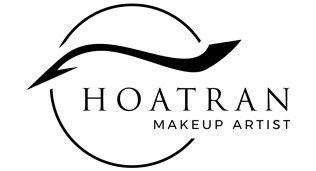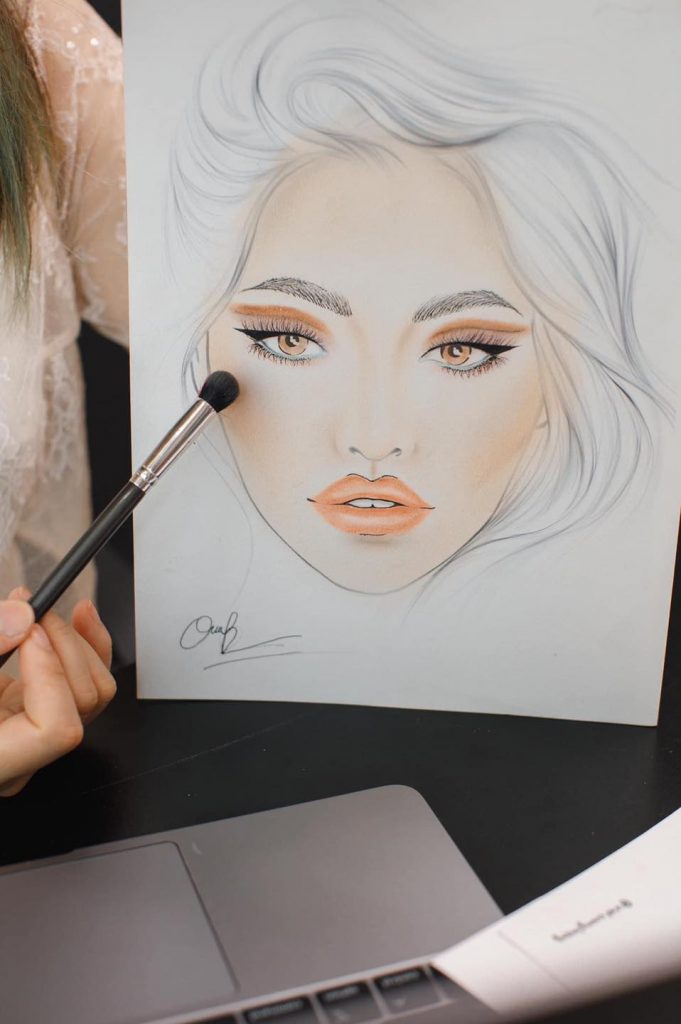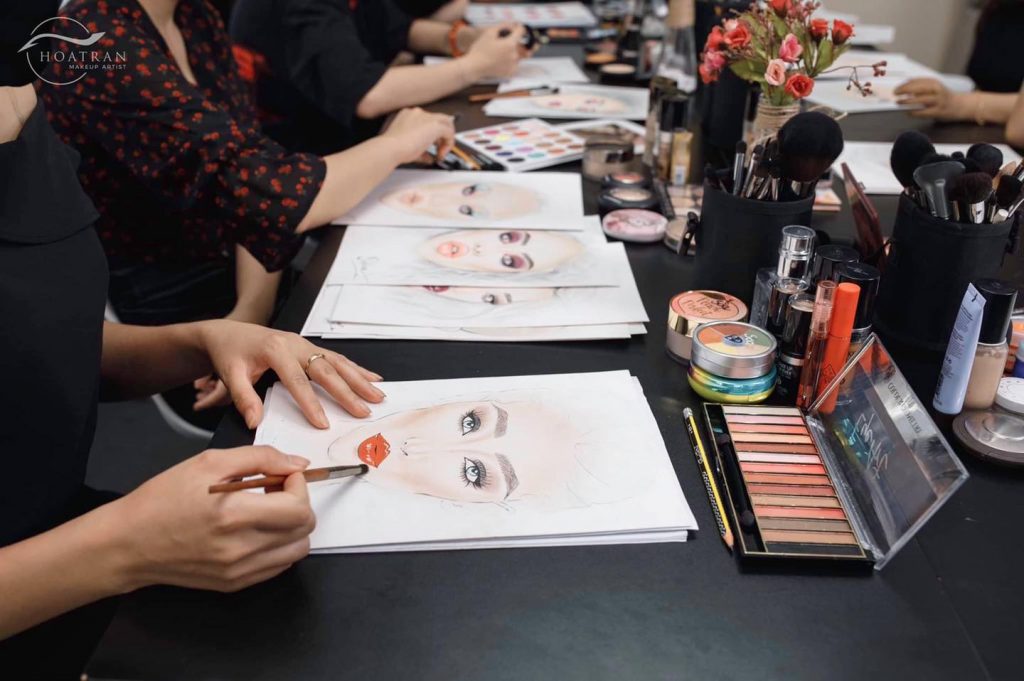We like to think of makeup face charts as an (extremely aesthetically pleasing) architectural blueprint. Before you can start building a house, for example, you need to map out a plan. Essentially, face charts are used primarily by makeup artists to test out or plan a makeup look, illustrated on special paper using real products like eyeshadow, lipstick, contouring, and so on. For example, some makeup artists will offer a bride an example of what her wedding makeup will look like beforehand, or give a celebrity client some options before they hit the red carpet.
According to many pro artists, face charts in their simplest form emerged sometime in the 1980s, their popularity increased over the years, and they have barely evolved until recently. The MAC face chart has been the gold standard for years. Until soon, more on that later.
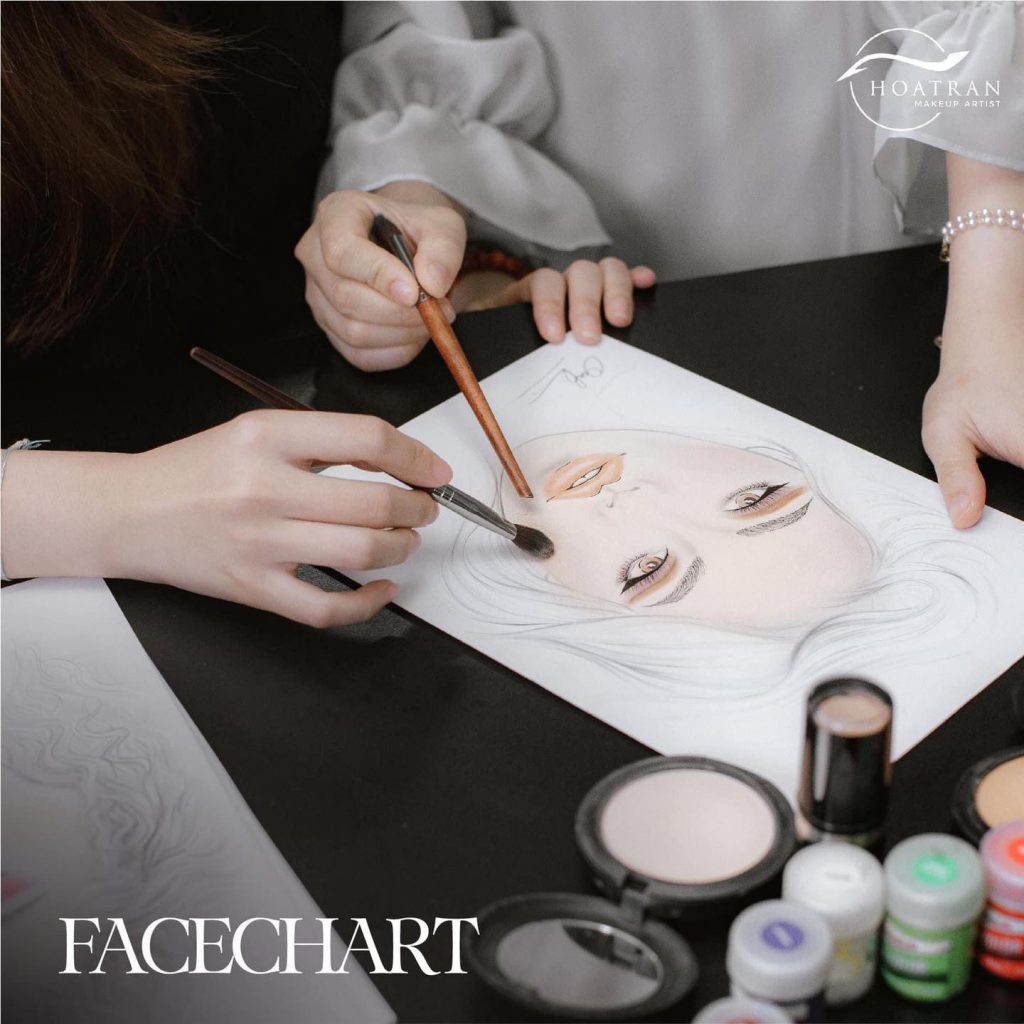
Nội dung chính
How do you use a face chart?
There are several ways in which a face chart is used, first, for business, skill-building, education, and now also for pure fun as a hobby.
How are face charts used for business?
To keep it easy, let’s go back to that MAC store again. The makeup artists on the shop floor use this tool, among other things, to advise their customers. Which product in which color is applied where. The templates are filled with actual makeup, which color combinations work, and which do not. The products used are registered if desired. This is useful as a reference for both the customer and the counter staff.
Face charts are used as portfolio material to show the possibilities and show the makeup artist’s professional competence. Customers get their inspiration from that. And in the quiet hours, the artists behind the counter can practice blending and work out new ideas.
Conquered the higher level makeup skills
Where the implementation of the face chart in the business or educational field (not for skill-building) is often quite simple, with only filling in some colors, exclusively with makeup products, in recent years, we have seen complete works of art appearing that pass for face charts. Realistic-looking portraits with the most frantic makeup creations, or just genius through simplicity, but artistic delights. An entire community rises out of nowhere, and its level and quality are increasing gradually. So you may be wondering why there are so many makeup drawings appearing on social media. And the answer is simple: it’s hot and happening!
If you are passionate about makeup, this makes a deep connection with yourself, providing another way to express yourself creatively. Hours fly by when you’re doing this. And you don’t think about anything, no daily worries but are in pure focus. “it is mesmerizing, blending and creating for hours with my favorite products and brushes, hours of spending ‘my’ time.”
